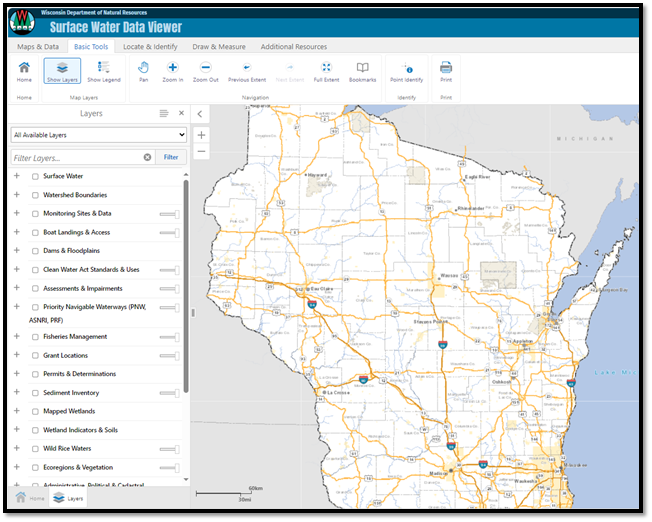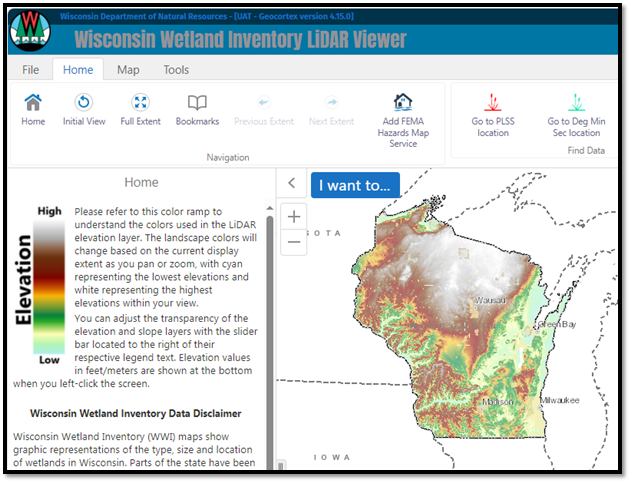|
The Wisconsin chapter of the Association of State Floodplain Managers has announced that their annual conference will be held Nov. 6-7, 2024, at the Milwaukee Hyatt Regency Hotel at 333 W Kilbourn Avenue, Milwaukee.
Registration and conference information is now available online.
From The HUD Final Rule Press Release
On April 22, 2024, the U.S. Department of Housing and Urban Development (HUD) issued a press release explaining that HUD published a Federal Flood Risk Management Standard (FFRMS) final rule in the Federal Register to help communities prepare for and reduce flood damage. This rule aims to protect communities from flood risk, heavy storms, increased frequency of severe weather events and disasters, changes in development patterns, and erosion. By implementing the FFRMS, communities can become resilient to flooding, protect lives and properties, minimize damage to households, reduce insurance costs, and safeguard federal investments – ensuring that federally funded construction projects are built to withstand current and future flood risks.
The final rule implements the FFRMS required by Executive Order (E.O.) 13690 by updating two of HUD’s regulations: Part 55, Floodplain Management and Protection of Wetlands and Part 200, Minimum Property Standards. This rule strengthens standards by increasing elevations and floodproofing requirements of properties in areas at risk of flooding, where federal funds are used to develop or provide financing for new construction within the now-defined FFRMS floodplain. It also applies to substantial improvement to structures financed through HUD grants, subsidy programs, and applicable multifamily programs. The update to Minimum Property Standards only applies to Federal Housing Administration (FHA) insured new construction within the 100-year floodplain.
HUD estimates approximately 10% of new FHA single-family homes constructed each year are within the 100-year floodplain, and many of those homes are already located in areas where state or local standards are higher than HUD’s previous standard. The updated standard reduces FHA homeowners’ exposure to losses caused by flooding, reduces insurance costs, and, most importantly, protects the risk to life faced in areas of greater flood risk.
According to the National Institute of Building Sciences, investments in elevation of structures more than pay for themselves when flooding occurs. Building to higher elevations is cost-effective when subsequent flooding occurs, providing a benefit of $6 in damages avoided for every $1 invested in elevation (Natural Hazard Mitigation Saves report). Underserved communities are disproportionately impacted by flooding events. Research from real estate company Redfin found that formerly redlined neighborhoods face a 25% greater risk of flooding than non-redlined neighborhoods.
Read the full press release on the HUD website.
Comments On The New HUD FFRMS Rule Compared To Wisconsin Floodplain Standards
The new HUD FFRMS standard exceeds the standards for floodplain development in Wisconsin (Wis. Admin. Code, Ch. NR 116.) Sometimes, development occurs, and the property is put up for sale, and you don’t know until a buyer tries to secure financing that they can only qualify for an FHA loan. Unfortunately, the individual would not be eligible to purchase the property because the structure doesn’t meet the new HUD FFRMS rule, even though it meets State standards. Communities may want to plan for the discrepancy between State standards and the new HUD FFRMS rule to ensure there are no added barriers to homeownership upon completion. Much of this rule became effective June 24, 2024, while the freeboard requirement takes effect Jan. 1, 2025. Again, this only applies to new construction and does not apply to existing legal, non-conforming structures.
This new rule requires that new construction homes built within the regulatory floodplain have two feet of freeboard. This is already a requirement in Wisconsin, isn’t it? Not exactly. The State’s model ordinance would allow for a basement or crawlspace at Base Flood Elevation, provided the main living area is two feet above. However, a slab-on-grade construction meets the HUD standards if the slab has two feet of freeboard. While the State floodplain ordinance allows a basement or crawlspace at BFE, any new construction built to these standards will prevent the purchaser from qualifying for an FHA loan.
The stated intent of these rules is to prevent damages to new housing development within the floodplain, protecting what most would deem their largest investment. Most communities in the State avoid development in the floodplain, but some municipalities with quite a bit of existing development in the floodplain need to utilize these areas to revitalize and grow to meet their communities' needs. Communities may want to consider the FFRMS to keep a variety of mortgage funding options available for their residents.
Surface Water Data Viewer
The Surface Water Data Viewer (SWDV) is a DNR interactive web mapping tool for a wide variety of datasets, including wetlands and wetland indicators, floodplains, dams and designated waters. The map allows you to locate and identify lakes and addresses and includes tools for drawing, measuring, and printing with a map key.
This amazing tool has many uses. DNR and municipal staff use it daily to prepare for on-site inspections, collect data for staff reports and better understand the surrounding landscape.
This is the home of the Wisconsin Wetland Inventory (WWI) data layer, which is used to implement County Shoreland-Wetland regulations (NR 115) and City/Village Shoreland-Wetland regulations (NR 117).
Find resources on how to use the Surface Water Data Viewer online:
 Wisconsin Wetland Inventory (WWI) Colorized LiDar Viewer
The Wisconsin Wetland Inventory (WWI) Colorized LiDAR Viewer is a similar tool to the SWDV but is a separate web viewer that contains the state-wide colorized digital elevation model. Calvin Lawrence, DNR Waterways & Wisconsin Wetlands inventory GIS specialist, developed this tool, which uses color to differentiate elevation changes and to better visualize the size, shape and connectivity of wetlands.
The elevation ranges are represented in color, with the lowest elevation being cyan and the highest elevation within the view being white (think snow-capped mountains). As you pan around and zoom in and out, the colors will change and will be referenced in relation to the center of the current display.
 Wisconsin Wetland Mapping
Wisconsin Wetland Mapping shows the general locations where the Wisconsin Wetland Inventory updates have been completed, are in progress and are planned next. These updates are funded by the Coastal Management Program, the National Oceanic and Atmospheric Administration and the U.S. Forest Service. Due to limited funding and staff, updates cannot be provided state-wide or created quickly. This is why the Wisconsin Wetland Inventory (WWI) Colorized Lidar Viewer is so useful.
By utilizing the colorized digital elevation model, the wetlands have been depicted more accurately. The updated areas, shown in blue on the map below, have new wetland inventory maps that use the National Wetland Inventory Classification System and a new color scheme to represent the different wetland types.

Shoreland Educational Videos
Do you have Shoreland Zoning educational information for property owners on your website? If not, check out the videos in this section brought to you by the Center for Land Use Education (CLUE).
Lakes create beautiful views and are great places to recreate, but they are also thriving ecosystems filled with animals, plants, microorganisms and other wildlife, including people. These videos explore the connection between lakes and shoreland and how these impact fish, wildlife and water quality.
Check out one of the videos from CLUE:

Other Shoreland Resources
There are a variety of additional shoreland resources available online. A handful of them have been curated here:
The DNR and UW-Madison Division of Extension have also partnered to create the Shoreland Stewardship Series:
The Shoreland Zoning Team is also available to assist with any questions you may have.
 Contact Information For Shoreland Zoning Staff:
Lower St. Croix National Scenic Riverway:
About The Wisconsin Floodplain Management Program
The program's goals are to protect life, health and property; to minimize costs for flood control projects; to reduce tax dollars spent for rescue, relief and repair of flood damage; to shorten business interruptions caused by flooding; to prevent future flood blight areas; to discourage victimization of unwary land and home buyers; and to prevent increased flood levels caused by unwise floodplain development.
Contact Us
Floodplain: Sarah Rafajko, Sarah.Rafajko@wisconsin.gov
Shoreland: Sue Vanden Langenberg, Susan.VandenLangenberg@wisconsin.gov
Dam Safety: Uriah Monday, Uriah.Monday@wisconsin.gov
|